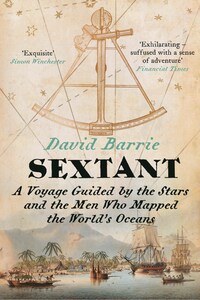William Collins
An imprint of HarperCollinsPublishers
1 London Bridge Street
London SE1 9GF
WilliamCollinsBooks.com
First published in Great Britain by William Collins in 2014
Copyright © David Barrie 2014
Maps © Nicolette Caven
David Barrie asserts the moral right to be identified as the author of this work
A catalogue record for this book is available from the British Library
All rights reserved under International and Pan-American Copyright Conventions. By payment of the required fees, you have been granted the non-exclusive, non-transferable right to access and read the text of this e-book on-screen. No part of this text may be reproduced, transmitted, down-loaded, decompiled, reverse engineered, or stored in or introduced into any information storage and retrieval system, in any form or by any means, whether electronic or mechanical, now known or hereinafter invented, without the express written permission of HarperCollins.
Source ISBN: 9780007516568
Ebook Edition 2014 ISBN: 9780007516575
Version: 2015-05-16
Crossing an ocean under sail today is not an especially risky undertaking. Accurate offshore navigation – for so long an impossible dream – has now been reduced to the press of a button, and most modern yachts are strong enough to survive all but the most extreme weather. Even if errors, accidents or hurricanes should put a boat in danger, radio communications give the crew a good chance of being rescued. Few sailors now lose their lives on the open ocean: crowded inshore waters where the risk of collision is high are far more hazardous.
But it was not always so. When a young man called Álvaro de Mendaña set sail from Peru in November 1567 to cross the Pacific with two small ships, accompanied by 150 sailors and soldiers and four Franciscan friars, he faced difficulties so great that his chances of survival, let alone achieving his objectives, were slim.>1
Mendaña’s orders from his uncle, the Spanish Viceroy, were to convert any ‘infidels’ he encountered to Christianity, but the expedition was certainly not motivated entirely by religious zeal. According to Inca legend great riches lay on islands somewhere to the west. Were these islands perhaps outliers of the great southern continent that was believed to lie hidden somewhere in the unexplored South Seas? Mendaña, who was twenty-five, hoped to find the answer, to set up a new Spanish colony, to make his fortune and win glory. However, any optimism he may have felt as the coast of Peru dipped below the horizon would have been misplaced. Although Magellan had managed to cross the Pacific from east to west in 1520–1, he had been killed in fighting with local people after reaching the Philippines, and only four out of the forty-four men who sailed with him aboard his small flagship had returned safely to Spain.>2 This first, epic circumnavigation was counted as a brilliant success, but other expeditions ended in oblivion.
The challenges Mendaña faced were many. Not only was it impossible to carry sufficient fresh food and water for a voyage that might well last several months, but sailing ships were also vulnerable to the stress of weather, and the discipline of their rough and uneducated crews could never be relied on. First encounters with native peoples were fraught with danger, even if both sides were keen to avoid conflict, not least because cultural and linguistic differences made communication so difficult. If the Europeans brought with them infectious diseases that were to devastate native populations, tropical diseases also posed a serious threat to the visitors. To venture into the unexplored wastes of the Pacific was therefore to risk shipwreck, mutiny, warfare, disease, thirst, hunger and, most insidious of all, malnutrition.
After a passage of eighty days Mendaña’s two ships at last reached the ‘Western Islands’ in February 1568. Thinking at first that they had indeed found the legendary southern continent, Mendaña and his men explored the high, jungle-clad island on which they first landed and soon realized their mistake. They named it Santa Isabel, because they had sailed from Peru on that saint’s feast day, and went on to visit the neighbouring islands, which they called Guadalcanal, Malaita and San Cristóbal. Though a chief had greeted the Spanish visitors warmly on their first arrival, the natives could not satisfy their pressing demands for food; Mendaña had difficulty controlling his men – and blood, mostly native, soon flowed.








